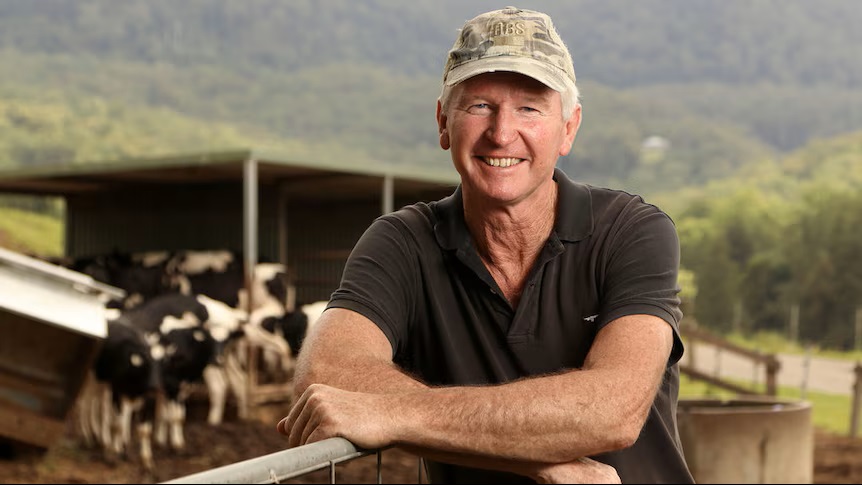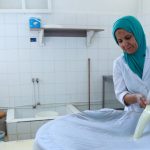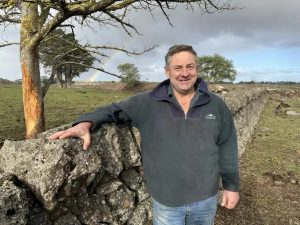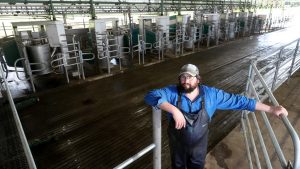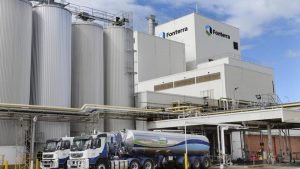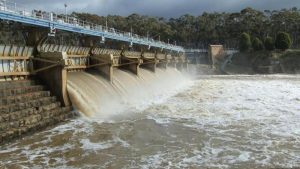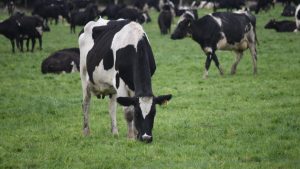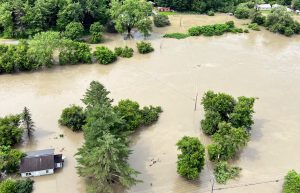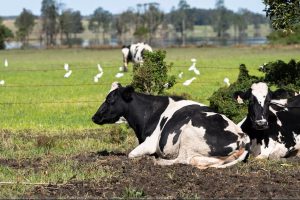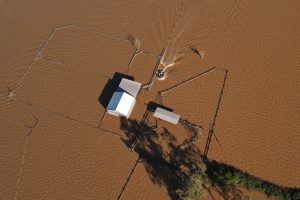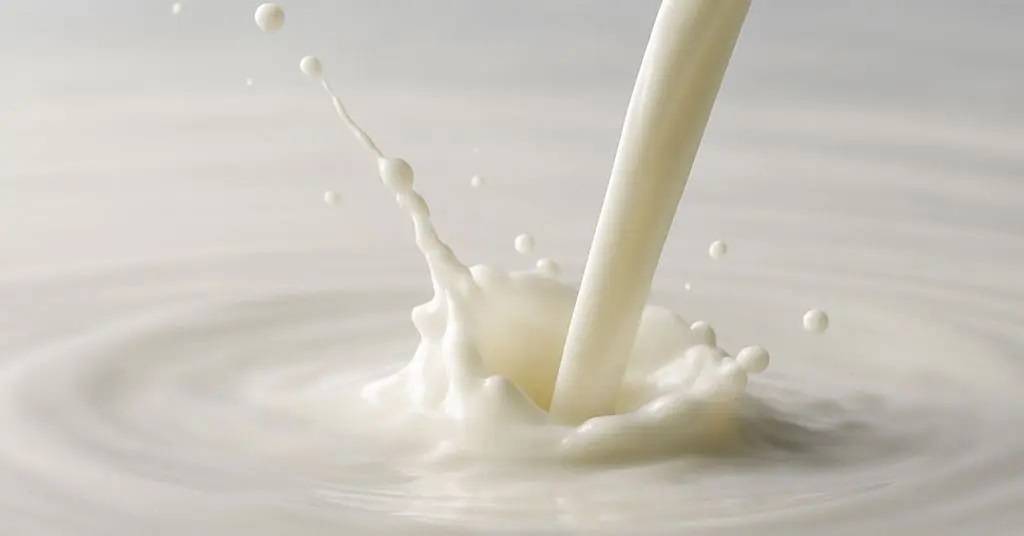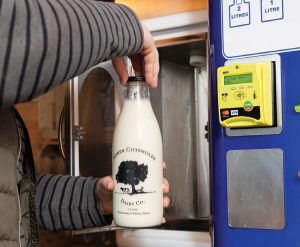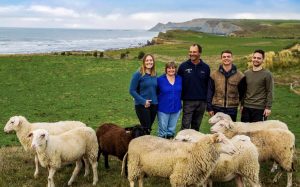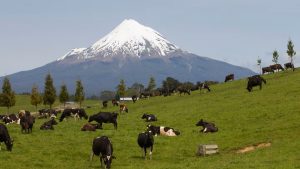
In short:
A NSW dairy farmer is encouraging other farmers to breed heat tolerant cattle using an Australian-made tool.
The Heat Tolerance Australian Breeding Value uses statistical analysis to help determine which animals are more susceptible to heat stress.
What’s next?
Dairy Australia says other countries, including the US, are looking to replicate the Heat Tolerance ABV for their climate.
On a hot, humid afternoon in autumn, near the New South Wales Southern Highlands, hundreds of milking cows make the long commute from Trevor Parrish’s back paddock to his dairy.
Despite the unpleasant conditions, most of the herd has been grazing all day and is now teeming with commercial-grade milk.
That is because this fourth-generation farmer has been breeding for heat tolerance using an invention designed to better protect cattle, and maintain milk yield, amid global warming.
Mr Parrish manages a 40-hectare dairy farm with 300 cattle outside Kangaroo Valley. (ABC Illawarra: Justin Huntsdale)
While Kangaroo Valley is certainly not the hottest area in the state, the surrounding hills trap the flow of cool air, often creating sweltering conditions for Mr Parrish’s Holstein heifers.
“This year has been more humid but December was exceptionally dry … the year before was exceptionally wet. So each year is never the same,” he said.
“And in the summertime, when it’s too hot, [the cows] all stand together, which makes it worse because their body heat multiplies.”
Kangaroo Valley, made famous by its heritage bridge, is about a 2-hour drive south-west of Sydney. (ABC Illawarra: Brooke Chandler)
Industry peak body, Dairy Australia, estimates milk yield can drop by between 25 to 40 per cent if cattle are too hot, causing them to stop eating or not eat enough.
Mr Parrish, 62, said he previously looked at other strategies aimed at keeping both milk production and his income steady.
“We have a larger dairy shed so there’s more shade and trying to milk the cows earlier in the morning and later in the afternoon,” he said.
Mr Parrish has worked as a dairy farmer on his family property for almost four decades. (ABC Illawarra: Justin Huntsdale)
In 2017, a new tool was published for farmers using artificial insemination called the Heat Tolerance Australian Breeding Value (ABV).
It used statistical analysis to tease out which animal had a greater ability to tolerate hot conditions and expressed it as a number with the base of 100.
Mr Parrish was quick to sign up, becoming one of the first farmers in NSW to try it.
“To me it made a lot of sense to have a look into it and try and use bulls that were [more] heat tolerant so it would help the next generation moving forward.”
Tool in genomic selection
Melbourne-based scientist Thuy Nguyen is the creator of the Heat Tolerance ABV.
In 2013, while working at an agricultural bio-science organisation, she set out to help farmers using her expertise in genomic selection.
“Farmers have already done a lot to help cows cool during hot days,” Dr Nguyen said
Thuy Nguyen created the Heat Tolerance ABV. (ABC Melbourne: Richard Sydenham)
“But adding genetics on top of all that is significant because it’s better for the animals and improves the bottom line for the farmers when they go through the warmer season, which we know is becoming more apparent due to climate change.”
The ABV requires a quick genetic sample, such as a tuft of hair, which is then posted to Dr Nguyen and her team at DataGene — an independent and industry-owned organisation.
Any result above 100 tells farmers that the cow has an above average heat tolerance and is the animal they should breed from.
“We will be able to tell [farmers] which animal is more tolerant or susceptible to heat stress,”
Dr Nguyen said.
Mr Parrish’s cattle can produce up to 50 litres a day in commercial-grade milk. (ABC Illawarra: Justin Huntsdale)
Mr Parrish said the results from his herd were surprising.
“One bull I’ve used did a big drop which was unfortunate. But I had a couple of others that went way up,” he said.
He now estimated about 20 per cent of his herd were genetically better at handling hot and sticky weather.
“I would totally encourage other farmers to use [the ABV]. It’s not getting any cooler.”
ABV receives praise overseas
Breeding heat tolerant cattle using the ABV has received a huge amount of homegrown industry support.
Dairy Australia’s national animal health and welfare lead Stephanie Bullen said the genetic index was a “world first”.
Stephanie Bullen is the national animal health and welfare lead at Dairy Australia. (ABC Central Victoria: Sarah Lawrence)
“We are really, really proud … I think it’s important to put the cow at the centre of this conversation; those cows are going to be uncomfortable in that hot weather,” she said.
“So it’s about maintaining the cow’s welfare as much as it is maintaining the productivity effects.”
Ms Bullen was a panellist at this year’s HERD-25 conference, a biennial event held in Bendigo.
She said the ABV was discussed on multiple occasions and had garnered international acclaim.
“[There] is certainly appetite by others internationally to look at what we are doing here and how that might work for them,”
Ms Bullen said.
Dr Nguyen said the tool had already been tested in America.
“The US tested our ABV and found that it works in their conditions so it’s great to see it make waves globally,” she said.
You can now read the most important #news on #eDairyNews #Whatsapp channels!!!
🇺🇸 eDairy News INGLÊS: https://whatsapp.com/channel/0029VaKsjzGDTkJyIN6hcP1K
